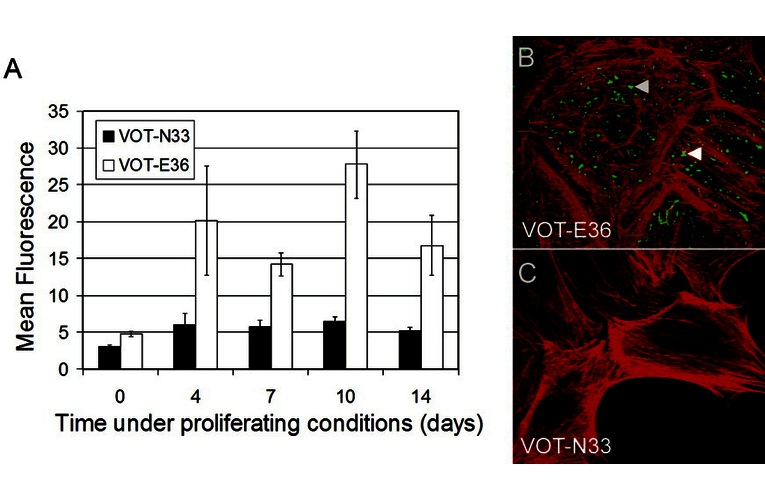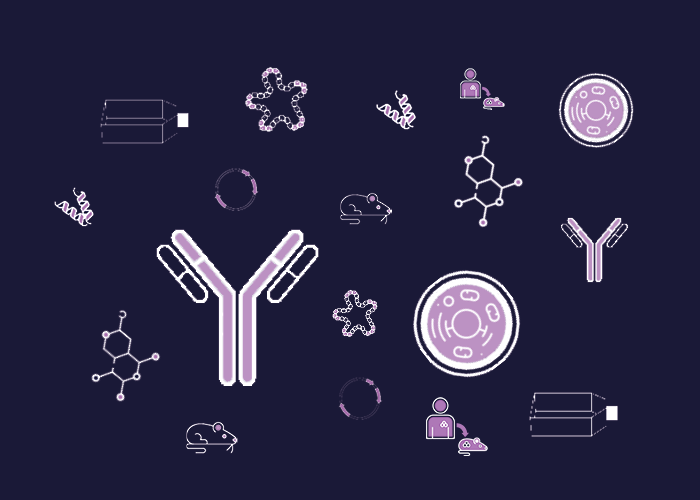Cat. #153626
US/VOT-N33 Cell Line
Cat. #: 153626
Sub-type: Continuous
Unit size: 1x10^6 cells / vial
Availability: 8-10 weeks
Organism: Mouse
Tissue: Embryonic
Disease: Deafness
Model: Transgenic
£575.00
This fee is applicable only for non-profit organisations. If you are a for-profit organisation or a researcher working on commercially-sponsored academic research, you will need to contact our licensing team for a commercial use license.
Contributor
Inventor: Matthew C Holley
Institute: University of Sheffield
Primary Citation: Lawoko-Kerali et al. 2004. Dev Dyn. 231(4):801-14. PMID: 15499550
Tool Details
*FOR RESEARCH USE ONLY (for other uses, please contact the licensing team)
- Name: US/VOT-N33 Cell Line
- Alternate name: US/VOT-N33; Ventral Otocyst-Neuroblast cell line number 33; University of Sheffield/Ventral OTocyst-Neuroblast 33; VOT-N33
- Research fields: Developmental biology;Drug development;Genetics
- Tool sub type: Continuous
- Organism: Mouse
- Tissue: Embryonic
- Disease: Deafness
- Morphology: Neuronal
- Growth properties: Adherent
- Model: Transgenic
- Model description: Conditionally immortalized cell line
- Crispr: No
- Conditional: Yes
- Conditional description: The cells were derived from ImmortomiceTM (Jat et al 1991 Proc. Nat. Acad. Sci. USA 88, 5096-5100) carrying a stable insertion of the conditional immortalising gene H-2Kb-tsA58, which describes a temperature-sensitive variant of the SV40 immortalising gene that encodes the large tumour antigen under the control of the γ–interferon-sensitive MHC Class 1 promoter. The cells proliferating culturing conditions: 33°C with γIFN; and the cells differentiating culturing conditions: 39°C without γIFN
- Description: US/VOT-N33 Cell Line is a conditionally immortalized cell line representing migrating neuroblasts derived from the ventral otocyst of the Immortomouse™ at embryonic day 10.5 (E10.5). At this developmental stage, the sensory epithelia of the inner ear have not yet differentiated, and the ventral otocyst epithelium is competent to give rise to auditory neurons and epithelial cells. The cell line was established to model early inner ear development and mechanisms underlying hearing loss in mammals. The cells carry a stable insertion of the temperature-sensitive SV40 large T antigen (H-2Kb-tsA58) under the control of a γ-interferon-sensitive MHC Class I promoter, allowing conditional immortalization. The growth temperature and presence or absence of γ-interferon are critical for phenotype: Proliferating conditions: 33°C with γ-interferon Differentiating conditions: 39°C without γ-interferon The cell line has been extensively characterized using Affymetrix mouse microarrays and has demonstrated functional integration following transplantation to the cochlear nerve in vivo.
- Application: Inner ear development studies; Gene expression and function of inner ear-specific genes studies; In vitro screening for gene activation and promoter analysis; Ototoxicity (prescribed drugs and agents that ameliorate their affects) studies; Studies on function of inherited deafness mutations; Functional analysis of ion channels, receptors and signalling pathways in vitro"
- Production details: Homozygous male Immortomice™ (originally derived from injected oocytes of CBA/Ca × C57BL/10 mice) were time-mated with wild-type C57BL/6 female mice to produce heterozygous offspring. Embryos were harvested at E10.5, and ventral otocysts were dissected under sterile conditions. Explants were cultured in medium containing 50 U/mL γ-interferon at 33°C to support expression of the conditional immortalizing gene (H-2Kb-tsA58). Selection of explants was based on expression of tissue-specific markers, including the transcription factor GATA3, under differentiating conditions in vitro
- Biosafety level: 1
- Cellosaurus id: CVCL_VC37
Target Details
- Target: GATA3 (GATA Binding Protein 3)
- Target background: Zinc finger transcription factor
Applications
- Application: Inner ear development studies; Gene expression and function of inner ear-specific genes studies; In vitro screening for gene activation and promoter analysis; Ototoxicity (prescribed drugs and agents that ameliorate their affects) studies; Studies on function of inherited deafness mutations; Functional analysis of ion channels, receptors and signalling pathways in vitro"
Handling
- Format: Frozen
- Volume: 1 ml
- Growth medium: MEM with 10% FCS, 50Units/ml y-IFN, L-glutamine, 33°C
- Temperature: 33°C
- Unit size: 1x10^6 cells / vial
- Shipping conditions: Dry ice
- Storage conditions: Liquid Nitrogen
- Mycoplasma free: Yes
- Characterisation tests: "Affymetrix mouse Micro-arrays; Proliferation (dependent upon the T-antigen); Morphology ; Tissue type (GATA3, Cytokeratin, ?4 integrins; ?3-tubulin, NeuroD, Pax-2, Myosin VI and VIIa expression tests)"
Related Tools
- Related tools: US/VOT-E36 Cell Line; GATA3eGFP reporter cell line; UB-UE1 Cell Line; UB-OC2 Cell Line; UB-OC1 Cell Line
References
- Sekiya et al. 2007. Eur J Neurosci. 25(8):2307-18. PMID: 17445229
- Lawoko-Kerali et al. 2004. Dev Dyn. 231(4):801-14. PMID: 15499550






